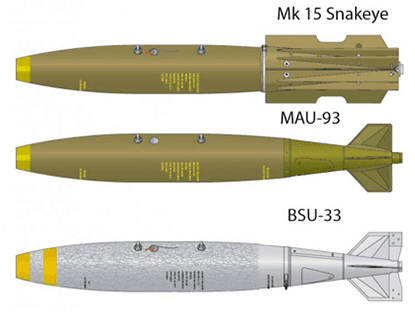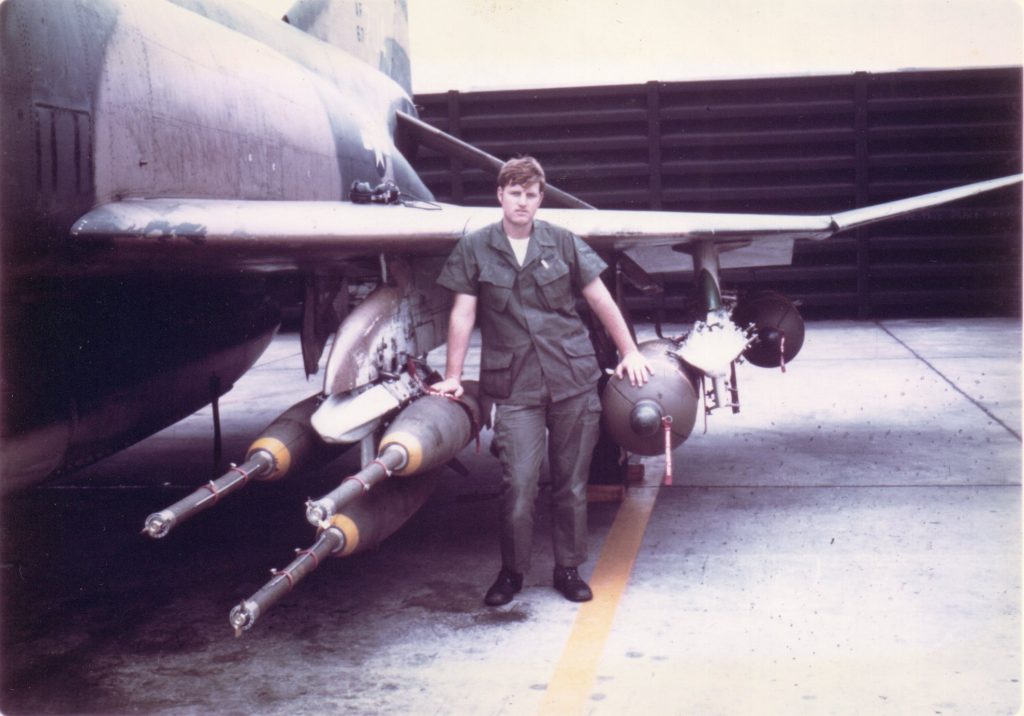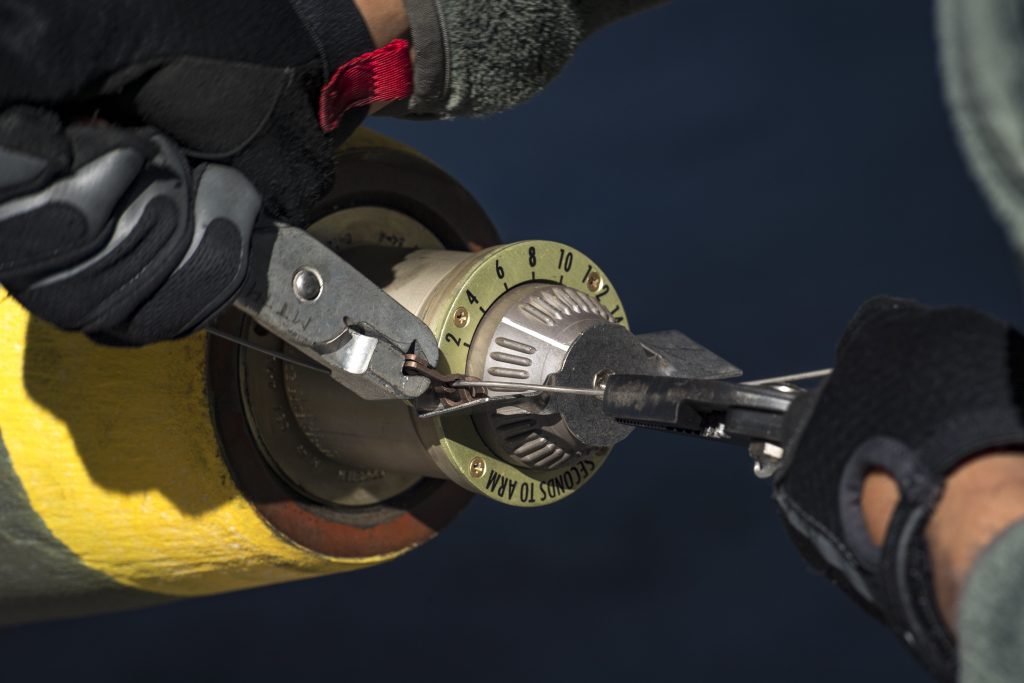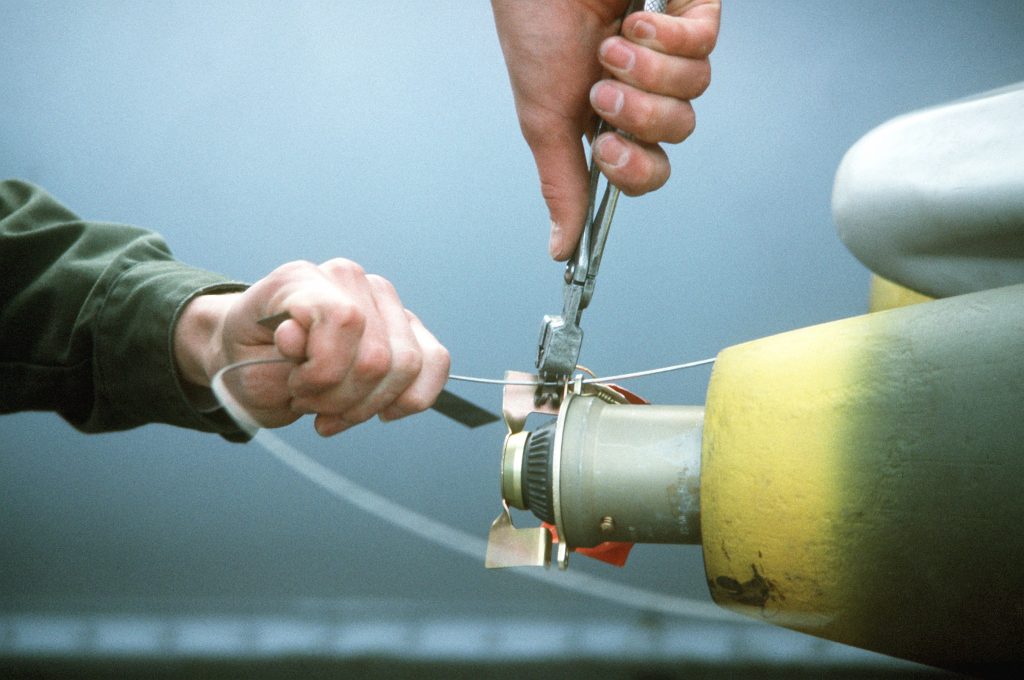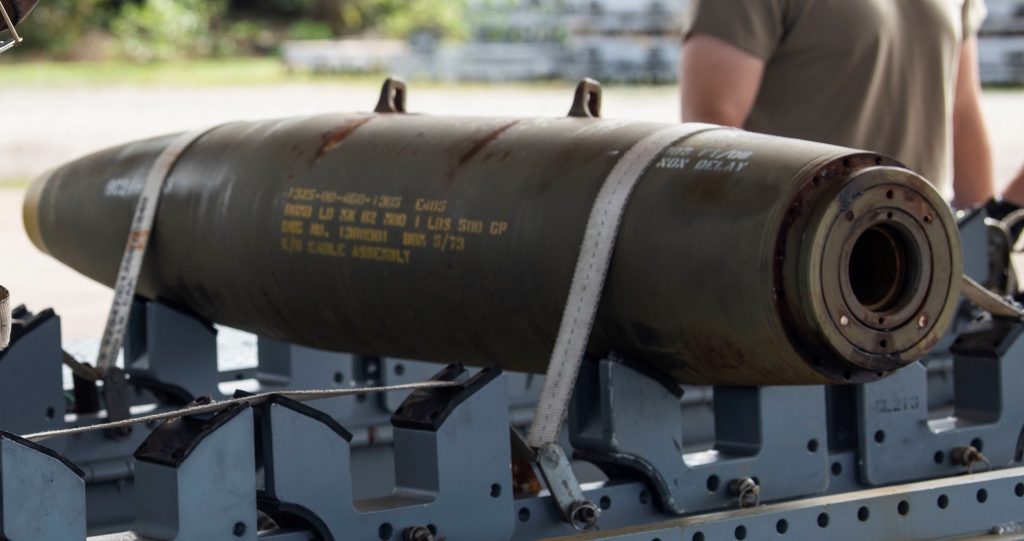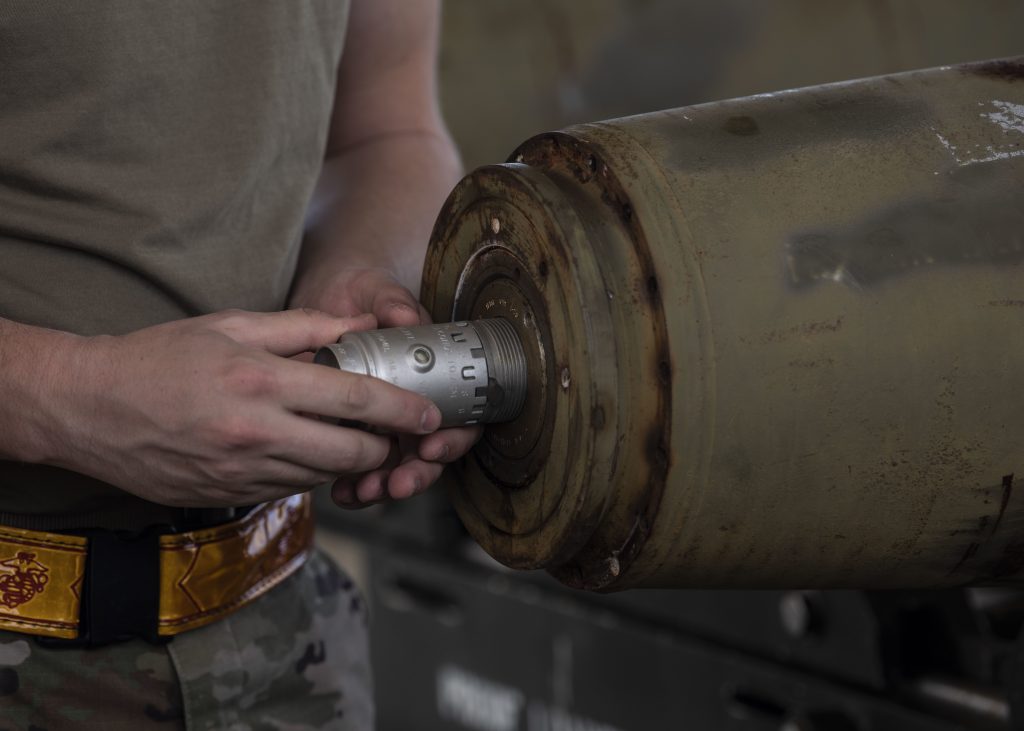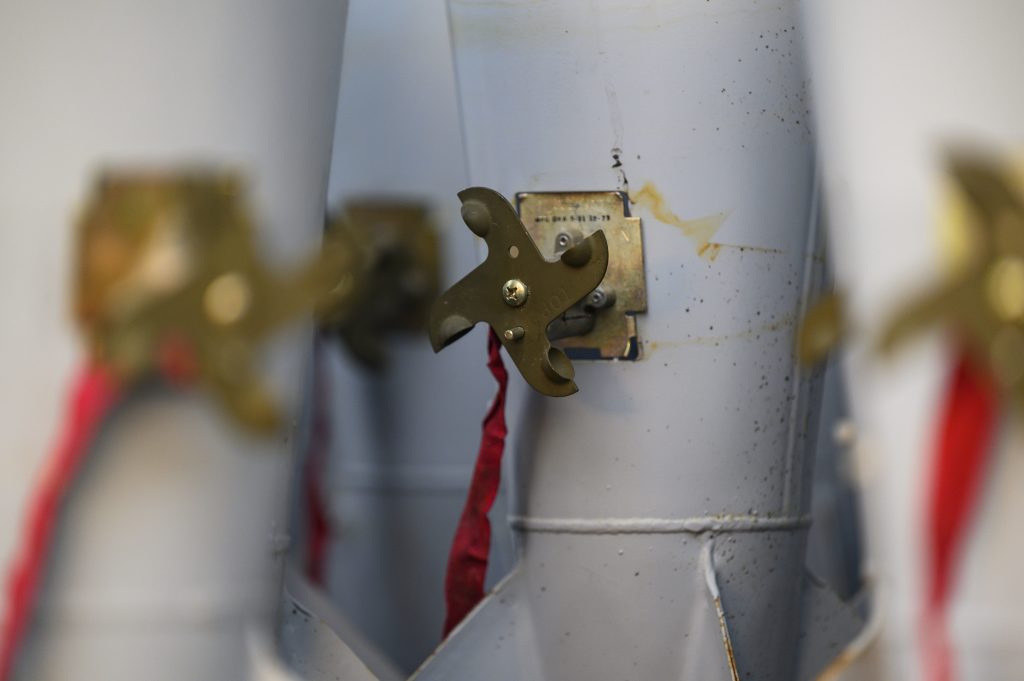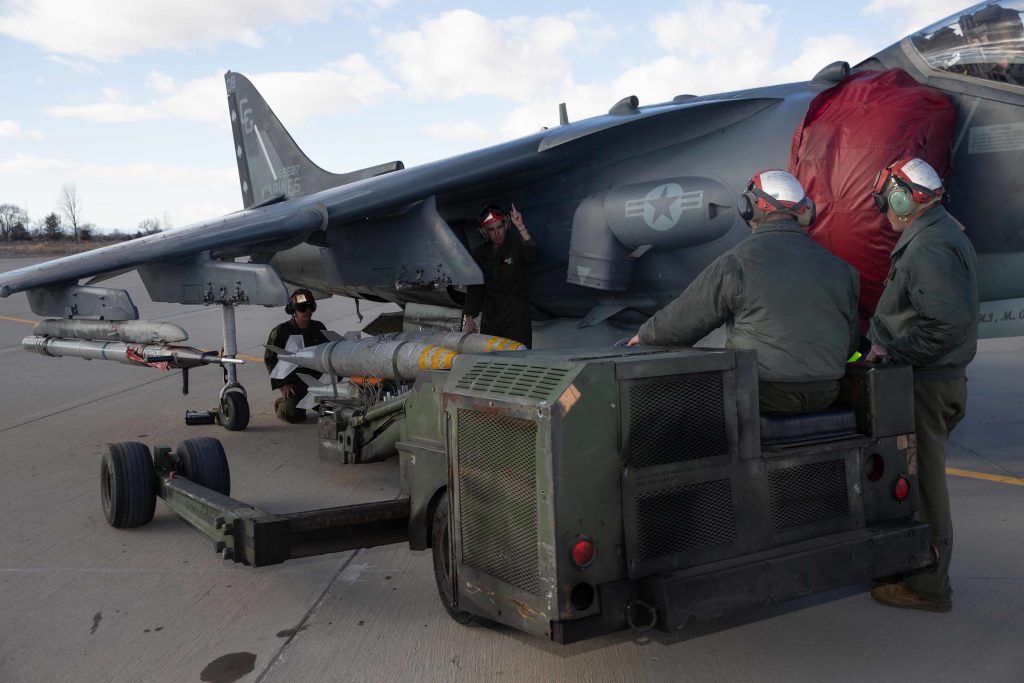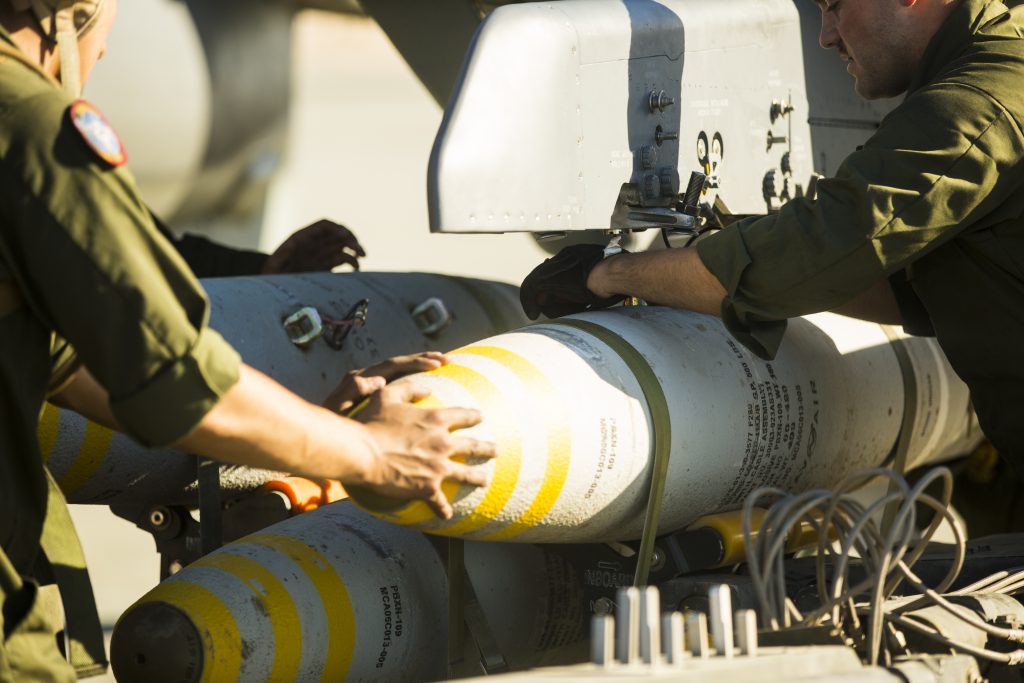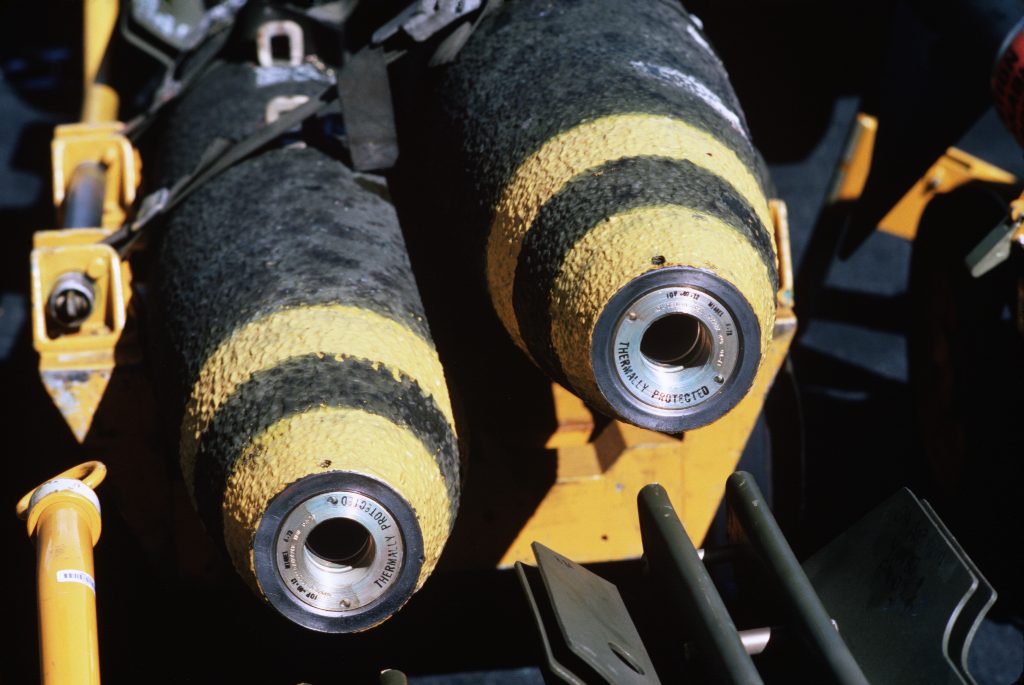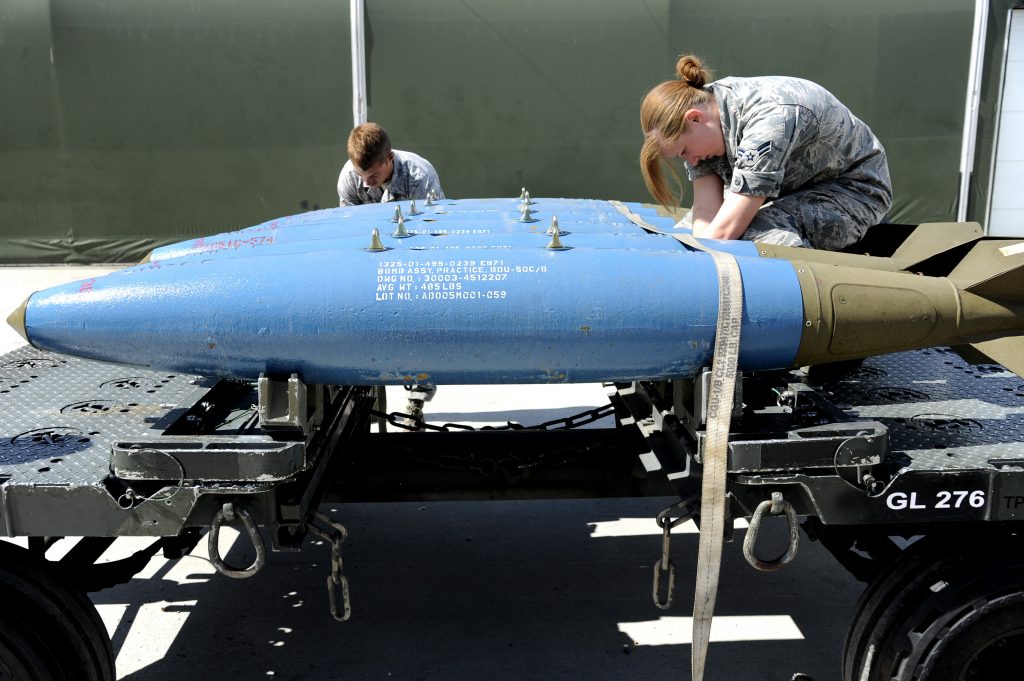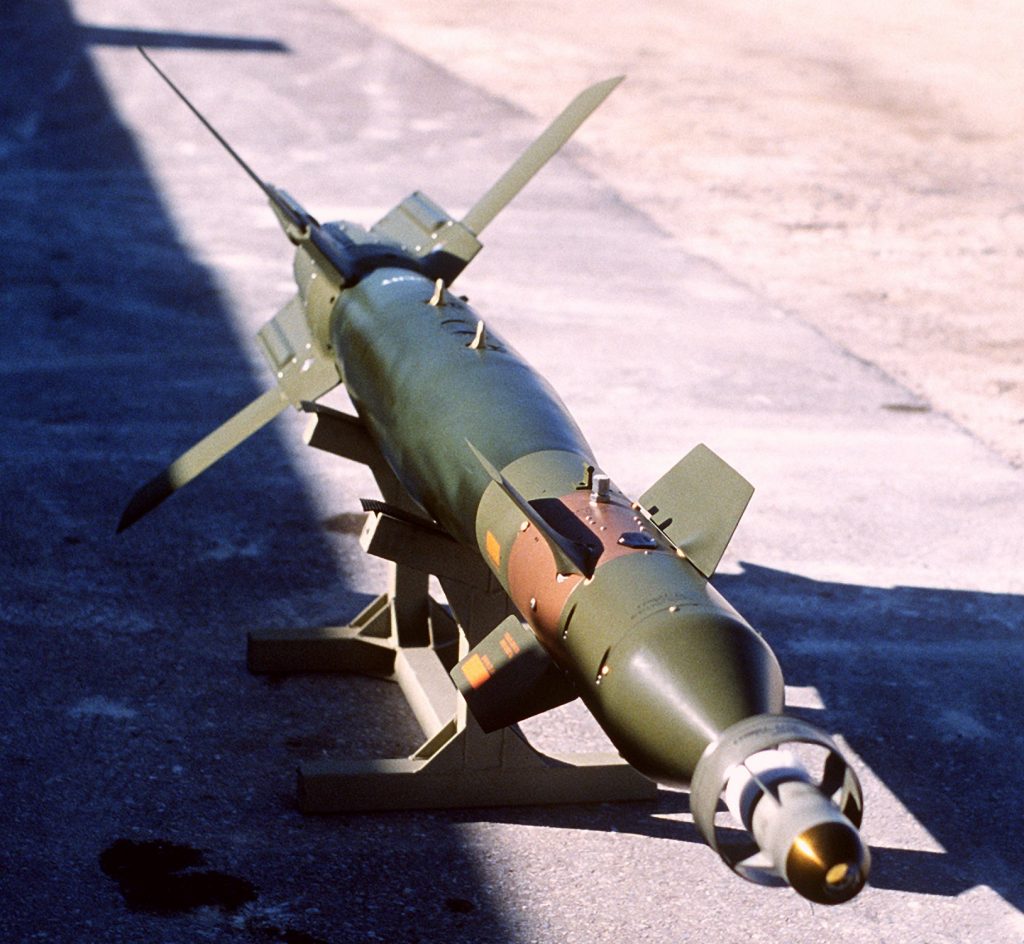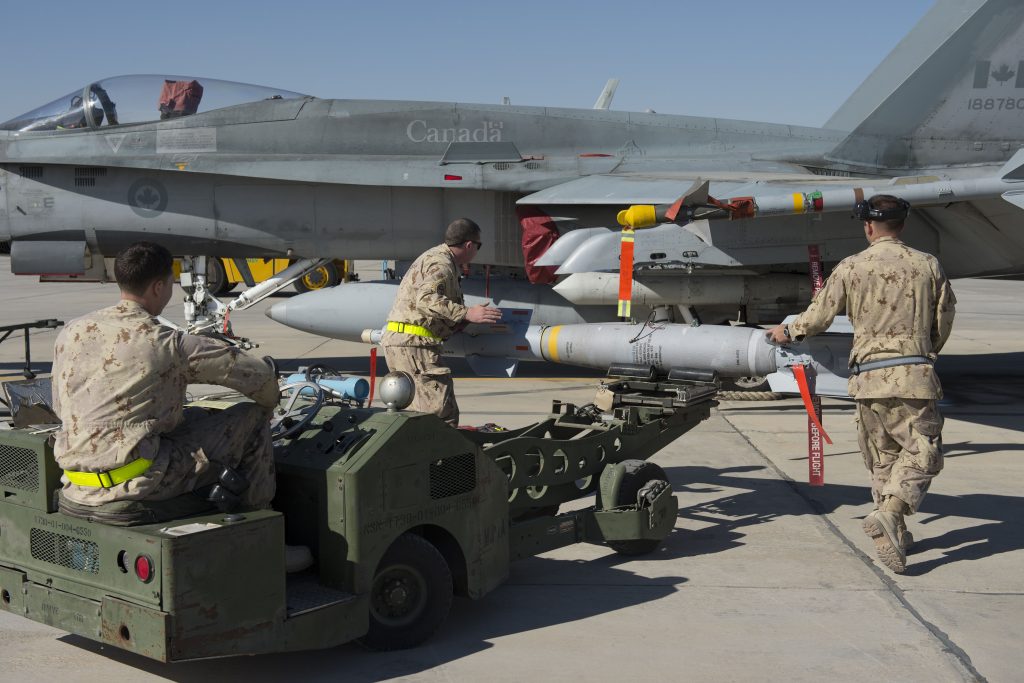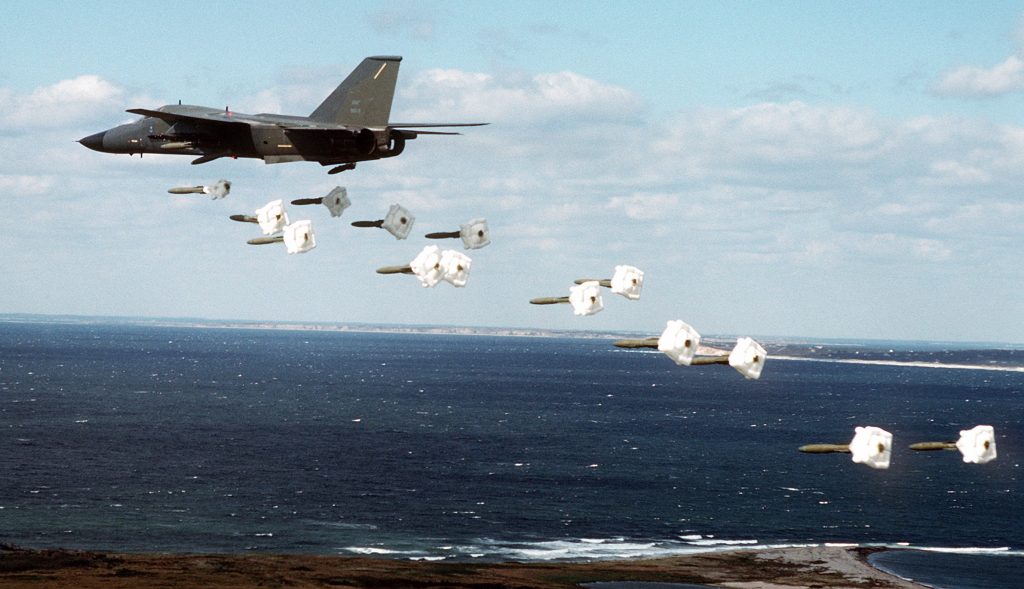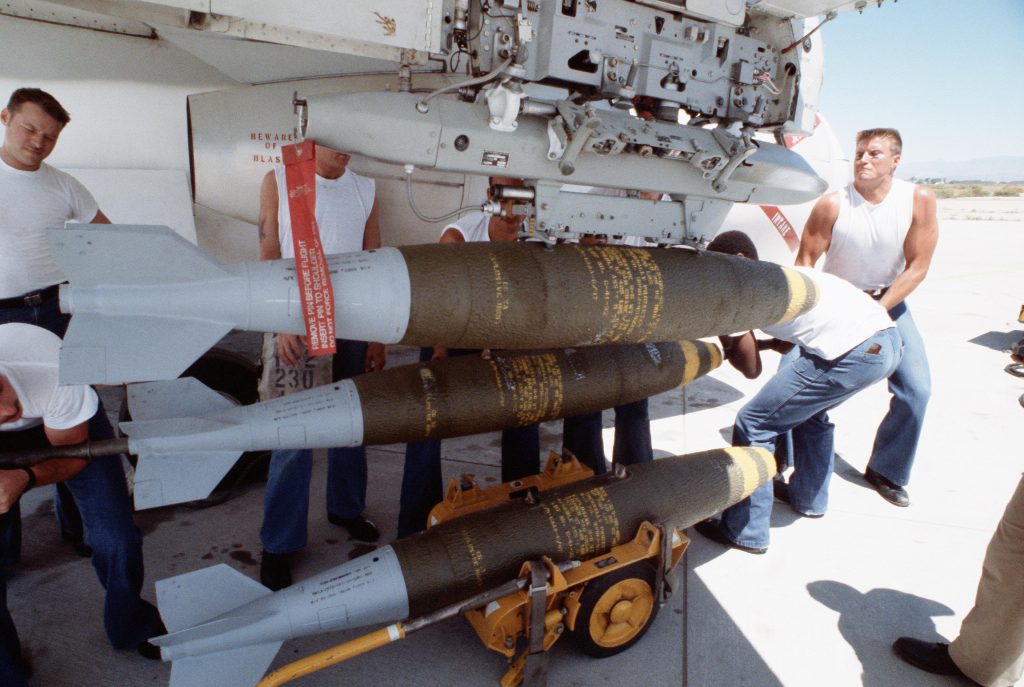
Bombing-up an S-3A Viking with Mk82s. U.S. Navy photo by Photographer’s Mate First Class Michael D.P. Flynn, 01FEB1988.
The Mark 82 (aka BDU) is a 5-hundred pound/227-kilogram unguided ‘vehicle’ (practice bombs about 400lbs/181kg) designed to hit your enemy with 192 pounds/87-kilograms of Tritonal high explosive. 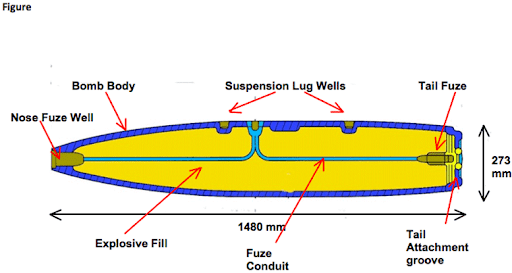 It was first used during the U.S. occupation of Vietnam. It’s part of the Mark 80 series of low-drag bombs, from Mk81 to Mk84, of similar shape but increasing size.
It was first used during the U.S. occupation of Vietnam. It’s part of the Mark 80 series of low-drag bombs, from Mk81 to Mk84, of similar shape but increasing size.
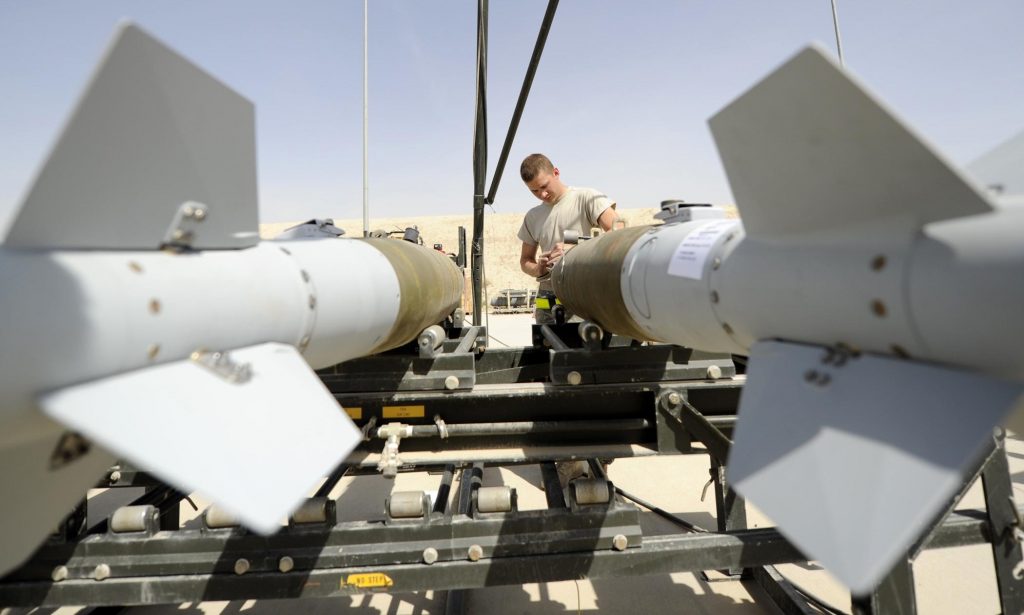
Mark 82s on Kandahar Airfield, Afghanistan. U.S. Air Force photo by Staff Sergeant Stephen Schester, 27APR2010.
The shape and size of the standard fins have changed over the decades, and the type of fins used changes the nomenclature (the various fins/tail cones have their own nomenclatures as well).
They’ve even been fitted with nose fuse extensions.
This video is about the history of the F-4 Phantom-2, but it has a couple of scenes from Vietnam in which F-4s off-load massive amounts of Mk82s:
Most ‘live’ Mk82s are painted olive drab with yellow markings and trim. Some are light grey with yellow trim. Yellow indicates it is a ‘live’ bomb.
This live Mk82 has a nose mounted M904 fuse.
Many bombs have varying shades of paint from one to the other, depending on how they were stored, exposure to sunlight, etc.
This live Mk82 has a rear mounted M905 fuse.
Some tail cones have ‘pinwheels’ (ATU-35A/B tail mounted fuse drive assemblies) that have an arming wire connected to the bomb release mechanism. The ATU-35 is for both the M904 nose fuse and the M905 rear mounted fuse.
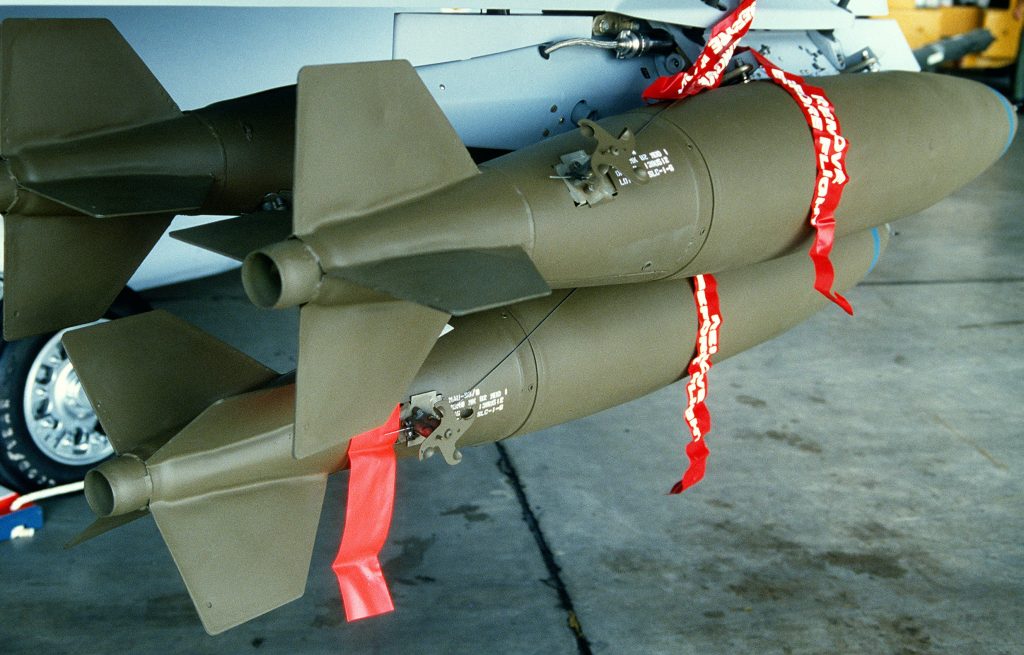
Pinwheels on the tail cones of these practice bombs, denoted by the blue stripe around the nose. USAF photo by Master Sergeant Ken Hammond, 27JUN1987.
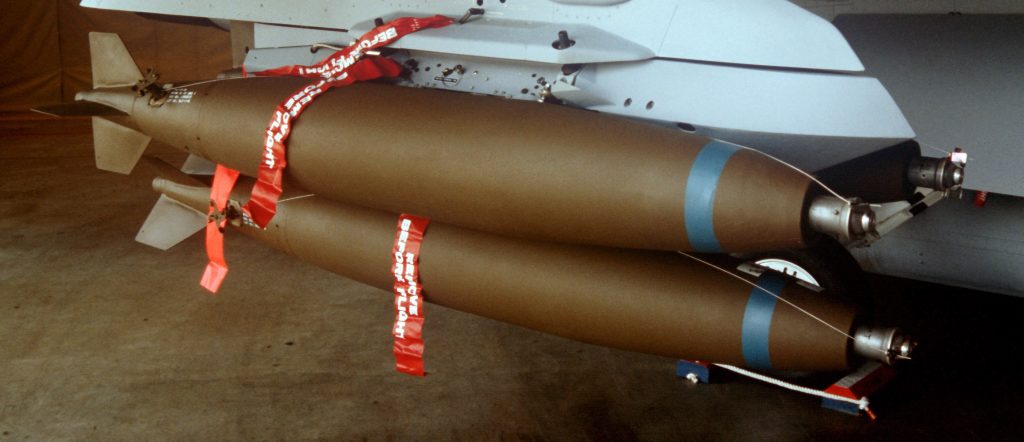
These Mk82s have the M904 nose fuse with the ATU-35 tail drive. USAF photo by Master Sergeant Ken Hammond, 27JUN1987.
The live Mk82s (BSU-33s?) on this AV-8B Harrier are grey with yellow trim. Note the USMC fins are the similar to the USAF fins.
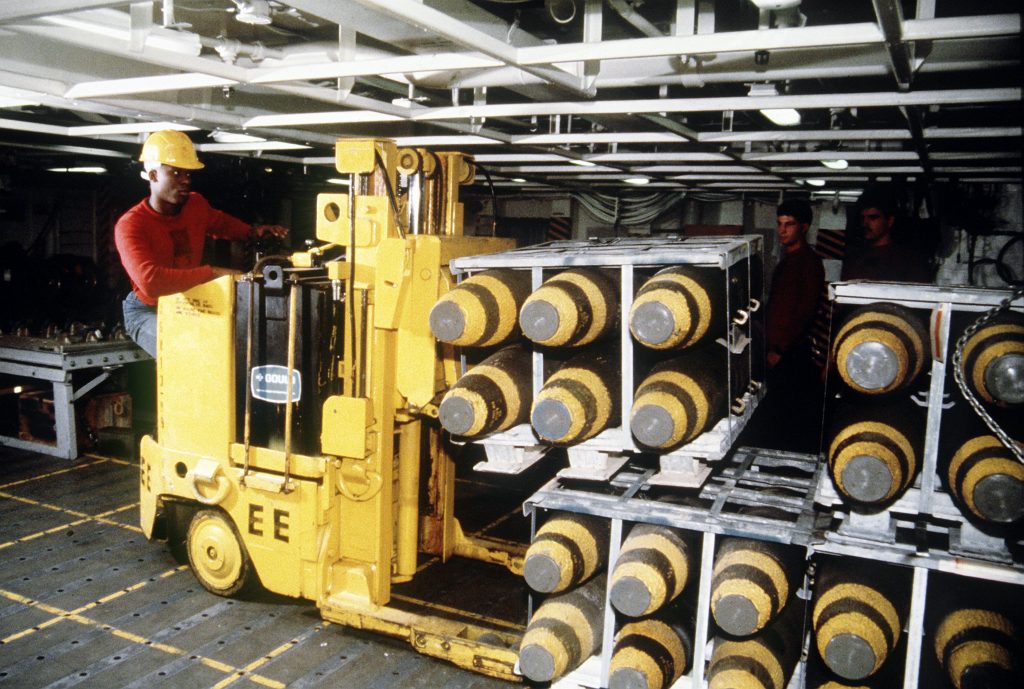
Mark 82s onboard aircraft carrier USS Abraham Lincoln (CVN-72). USN photo by Photographer’s Mate Second Class Tracy Lee Didas, 01OCT1989.
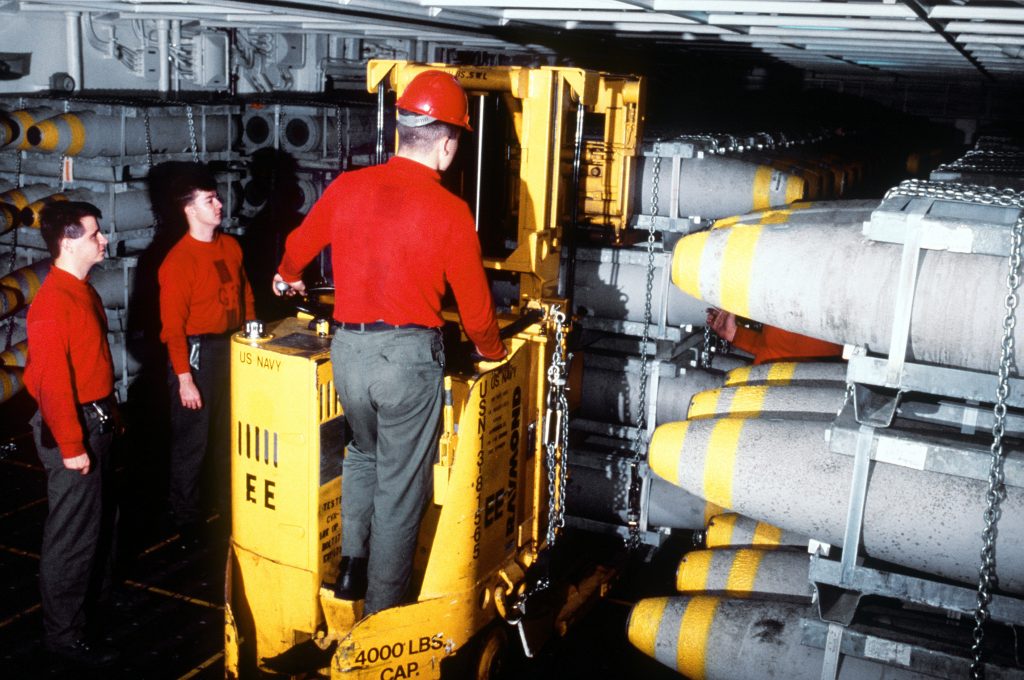
Same aircraft carrier, but in 1993. Mark 82s onboard aircraft carrier USS Abraham Lincoln (CVN-72). USN photo by Photographer’s Mate Second Class Hayhurst, 01OCT1993.
For those model builders who are worried that they’ve hit their Mark 82s/BDUs with a paint bomb, most U.S. Navy/USMC bombs have a thick stucco looking coating of paint.
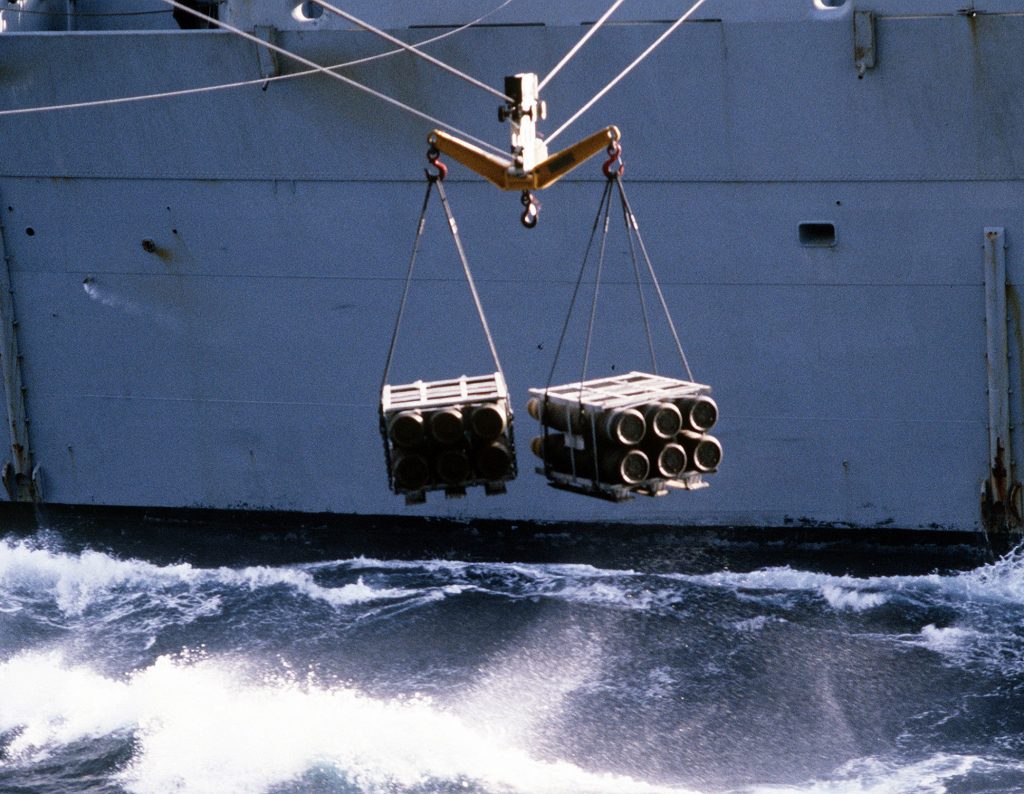
Mark 82s being transferred from ship-to-ship during Desert Storm. USN photo by Photographer’s Mate Second Class Charles W. Moore, 01FEB1991.
Video, 726th EABS Munitions Systems team shows you how to build a Mk82, November 2019, Djibouti:
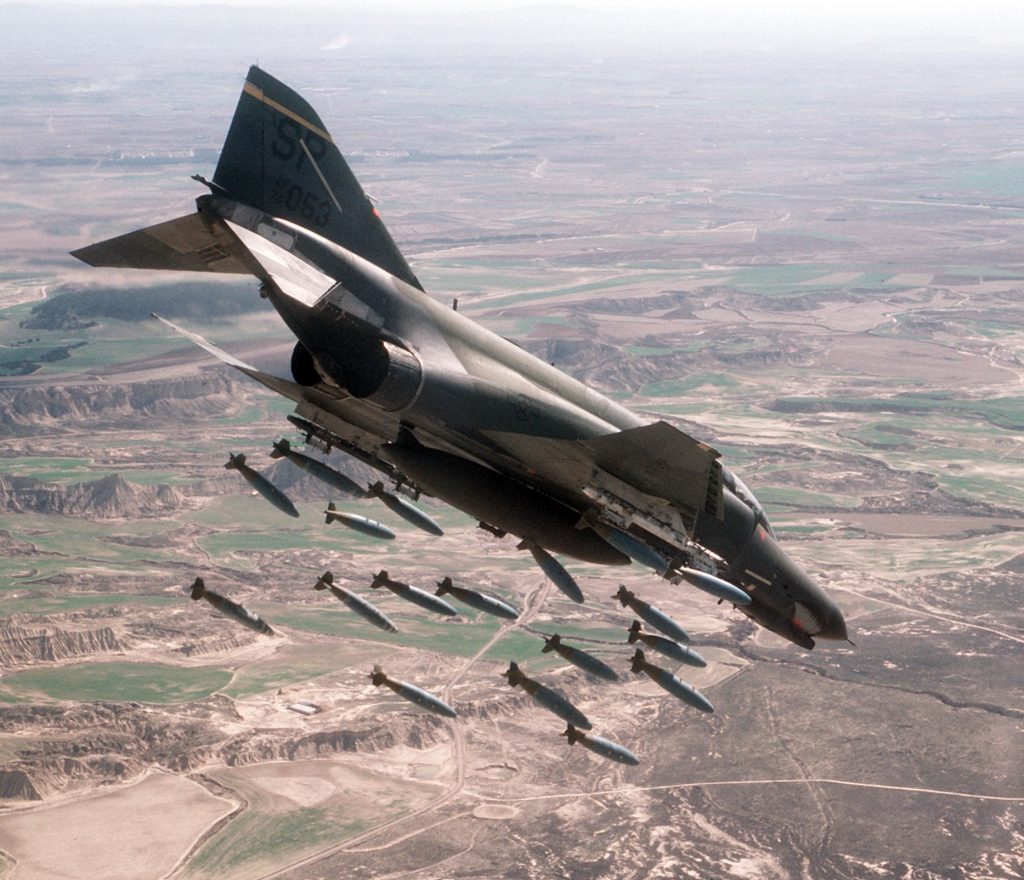
An F-4E Phantom II off-loads a bunch of blue bombs onto the Bardenas Bombing Range in Spain. USAF photo by Staff Sergeant David Nolan, 25MAR1986.
Practice bombs are painted blue, or O-D with blue trim and fins. Some are so old the blue paint is extremely faded. Some practice bombs have spotting charges in the fin section to make it easier to spot where it impacts on the target field.
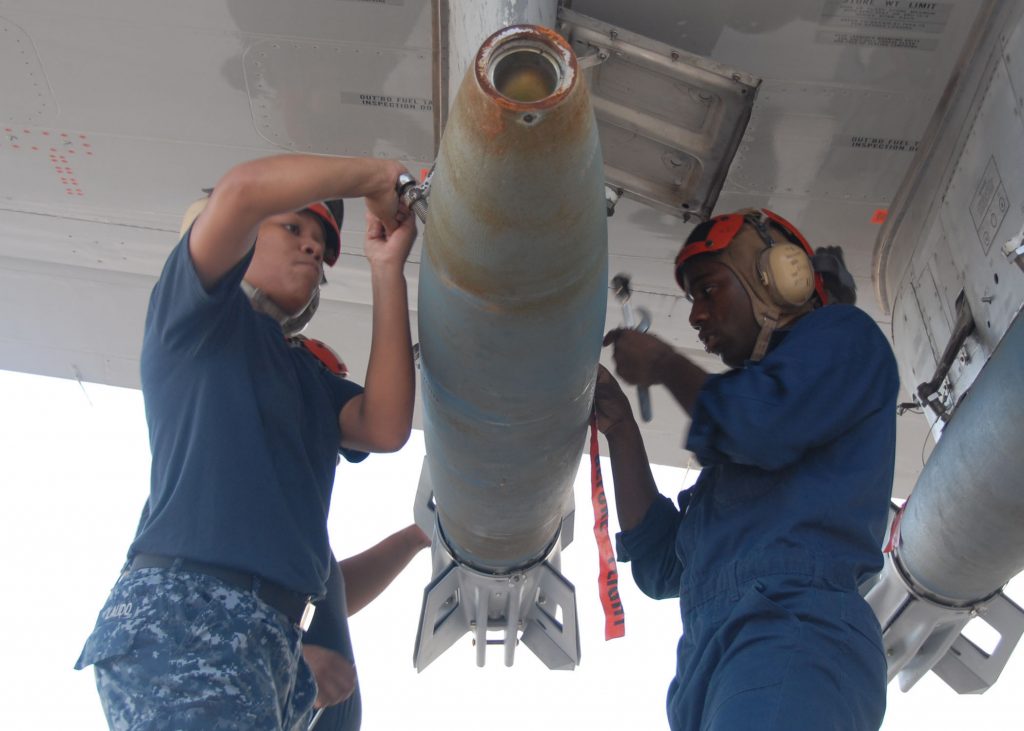
BDU-45 mounted on P3C Orion. USN photo by Mass Communication Specialist Second Class Harry J. Rucker the Third, 25OCT2009.
The U.S. Navy calls their practice Mk82 bomb the BDU-45. Note there is a difference between USN fins and USAF fins.
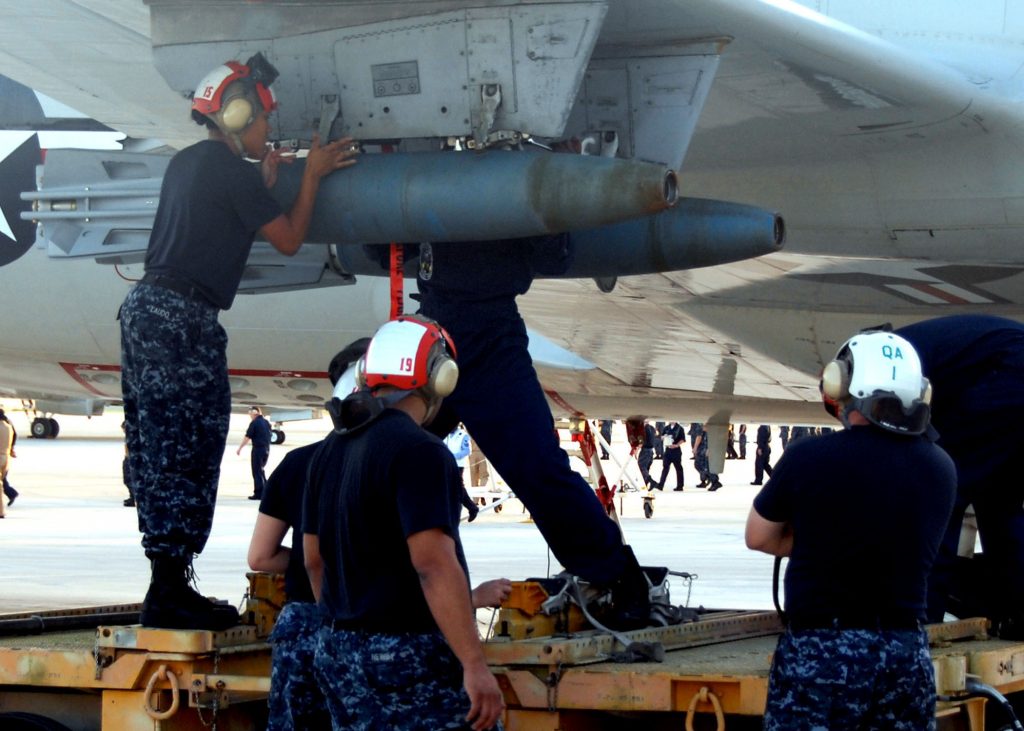
BDU-45 mounted on P3C Orion. USN photo by Mass Communication Specialist Second Class Harry J. Rucker the Third, 25OCT2009.
Blue bombs.
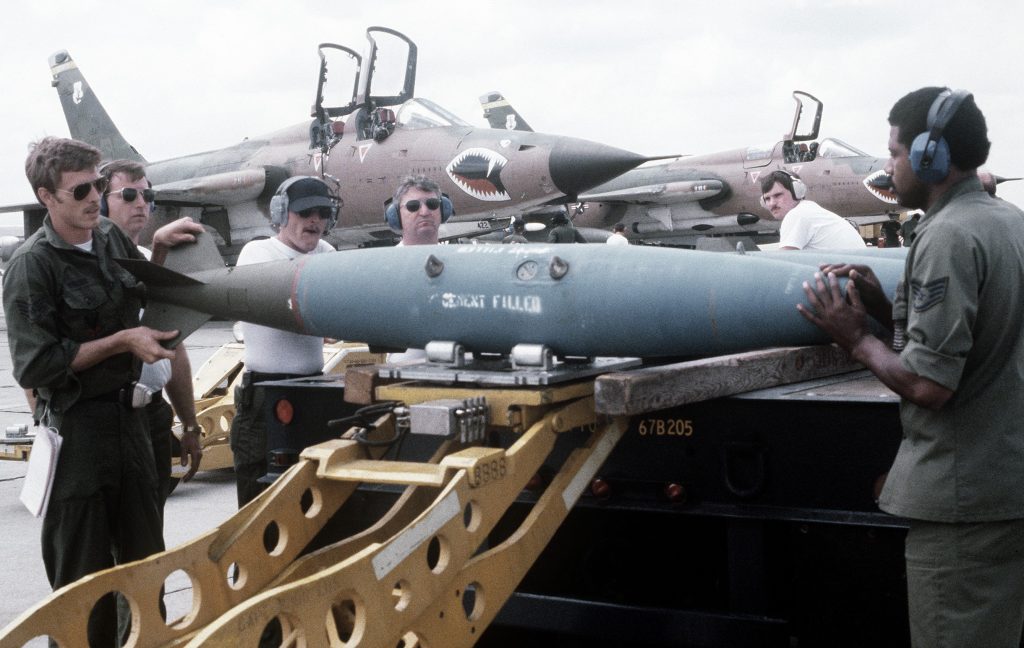
Georgia Air National Guard F-105G gets bombed-up with a cement filled Blue Bomb. Photo by Airman First Class Sheryl D. Barnett, 10APR1981.
Video, Davis Monthan, Arizona, Operation SnowBird 2013, Idaho National Guard bombs-up their A-10s with Maverick missiles and Mk82s:
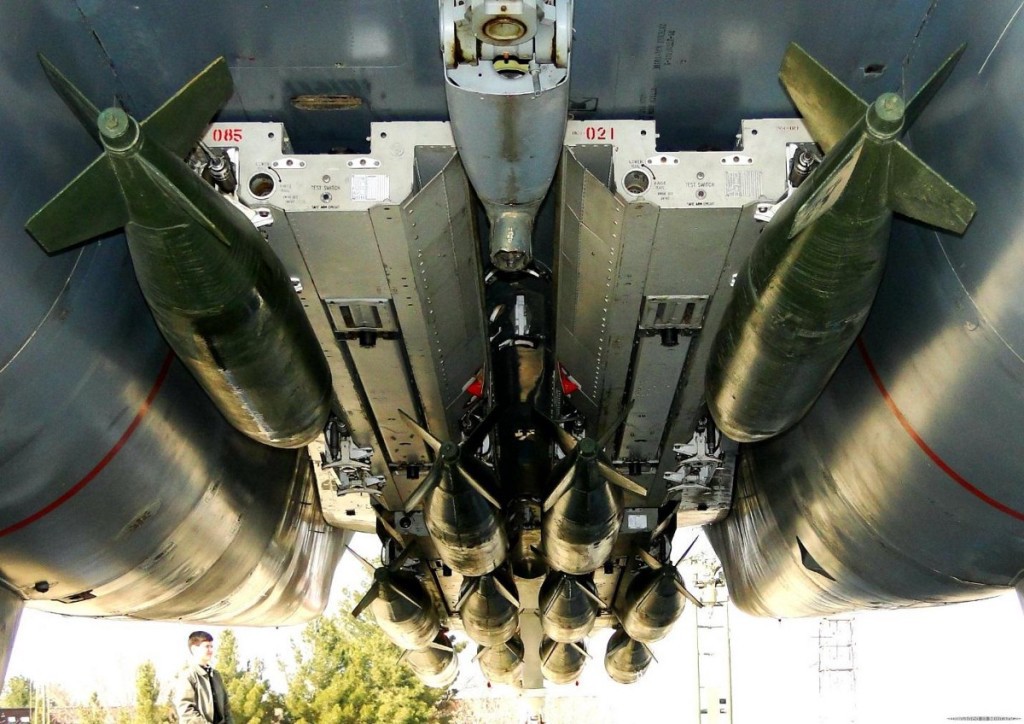 An Iranian F-14 tomcat bombed-up with Iranian made Mk82s on Iranian designed bomb rack.
An Iranian F-14 tomcat bombed-up with Iranian made Mk82s on Iranian designed bomb rack.
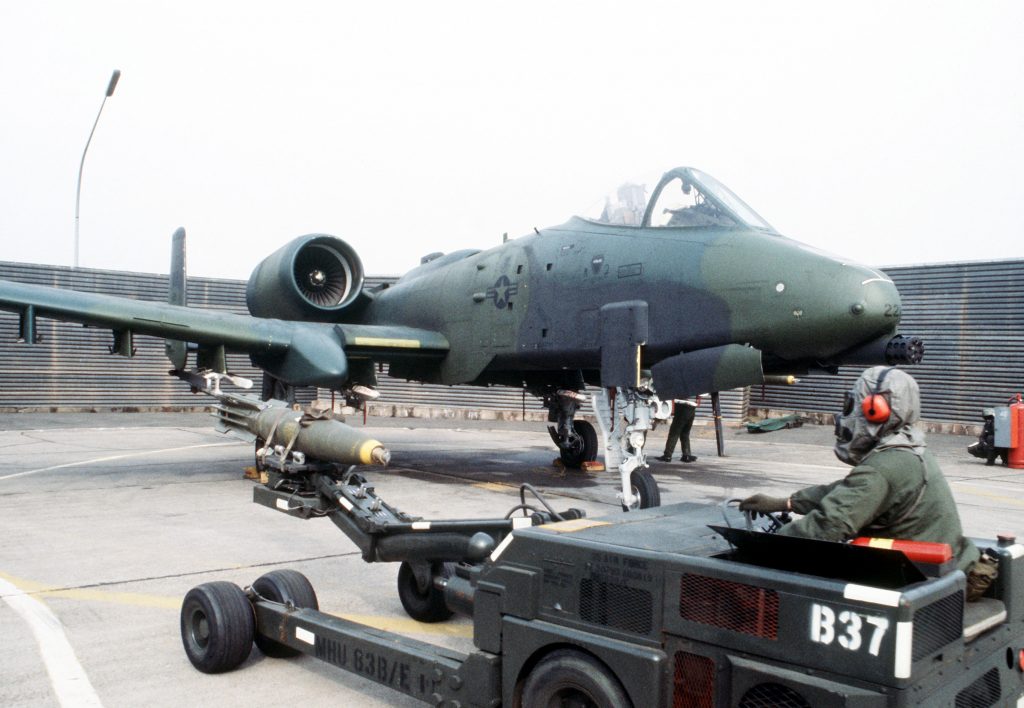
A-10A on Sembach Air Base, Germany, being bombed-up with a Mk82 Snake Eye. USAF photo by Sutherland, 22APR1982.
The Mk82 can be fitted with low-drag fins or the infamous high-drag fins called Snake Eye. The Snake Eye, or Mark 14 Tail Retarding Device, was developed because aircraft making low-level bombing runs would get hit by the shrapnel from the low-drag Mk82s.
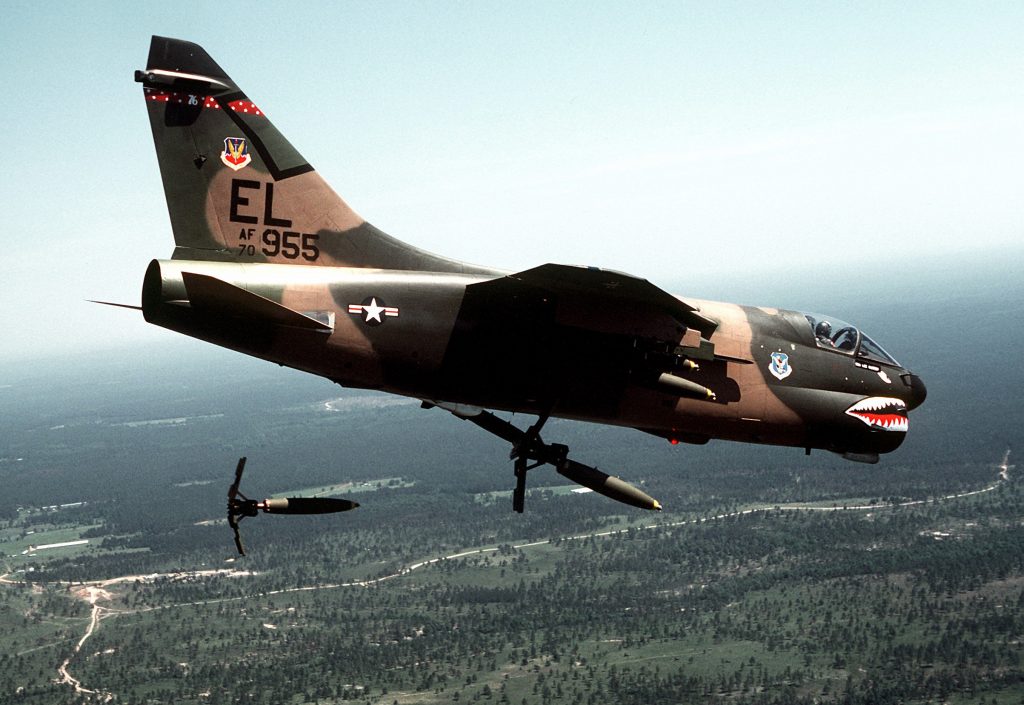
A-7 Corsair II releasing Mark 82 hi-drag (Snake Eye) bombs on bombing range in Florida. USAF photo by Technical Sergeant Frank Garzelnick, 01MAY1980.
The Iranians love the Snake Eye, using it during low-level high-speed bombing runs against invading Iraqi forces in the 1980s and still using it today.
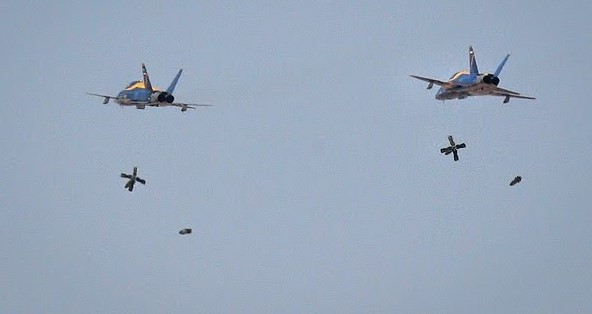 Iranian Thunderbolts (twin tailed F-5s) dropping snake eyes.
Iranian Thunderbolts (twin tailed F-5s) dropping snake eyes.
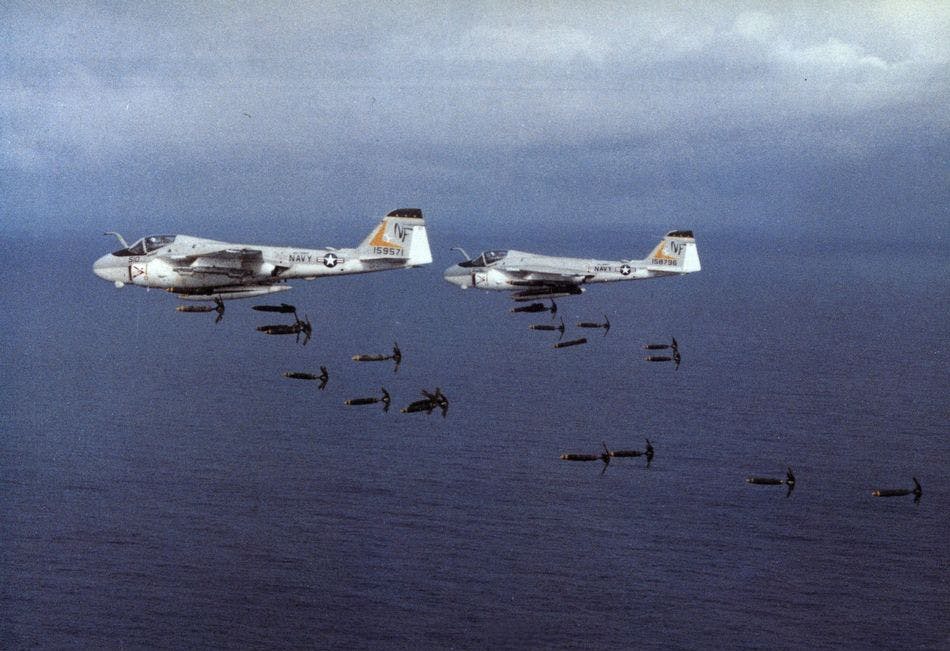 U.S. Navy A-6 Intruders dropping snake eyes.
U.S. Navy A-6 Intruders dropping snake eyes.
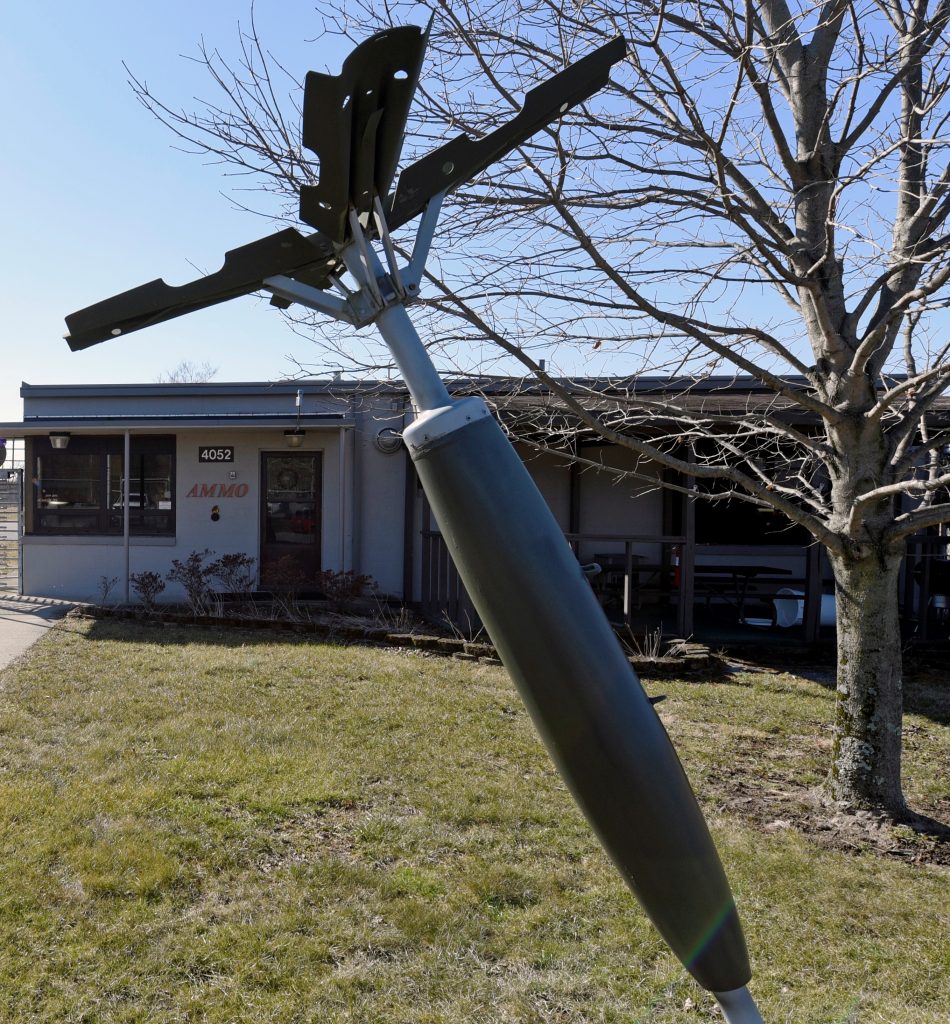
Snake Eye outside the U.S. Air Force 88th Operations Support Squadron, Munitions Flight, at Wright-Patterson Air Force Base, Ohio, 03MAR2021. USAF photo by Ty Greenlees.
GBU-12 Paveway II is a ‘smart’ Mk82 with laser guidance system.
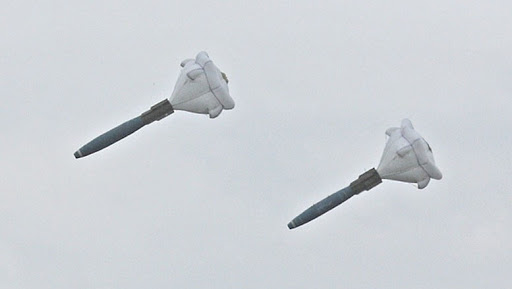 This Mk82 is equipped with the Air Inflatable Retarder (AIR) tail.
This Mk82 is equipped with the Air Inflatable Retarder (AIR) tail.
VEHICLE I-D: F-22 RAPTOR

